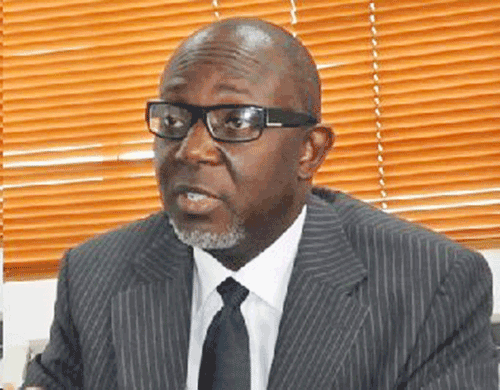It has emerged that the contribution of the Lagos State Signage and Advertisements Agency (LASAA) to internally generated revenue (IGR) is insignificant, contrary to the perception that it is a cash cow.
LASAA Chief Executive Officer, George Noah, told journalists in his office in Ikeja that what the agency generates in a year is what the tax office perhaps generates in one week. Senior Correspondent, GODDIE OFOSE, was there.
Compliance on mobile advertisement
It is always very difficult for people to comply on their own. Secondly, our rates are now competitive with those of other states around. Prior to this period people used to go to Ogun State and other neighbouring states to register their vehicles.
The law says if you brand your vehicle in any state, you are allowed to drive it anywhere in the federation. So we have to be competitive.
There was no need for anybody to go to Oyo or Delta to register their vehicles. We reduced the fee and there was a lot of compliance, so we were able to increase revenue by 300 per cent.
Your men on the street
They help us to enforce the mobile advert law. They are not touts, they are very well trained by the best people you can find.
When they stop you, they approach you responsibly. They are very polite, and if you abuse them, they will tell you what their job is.
We drum it into their ears over and over again that they are not touts. That they are from one of the most respected agencies in the state and have to comport themselves. They have to deal with the public in the best possible way; no abuse, no confrontation.
We’ve had a lot of confrontation from members of the public. This is because when you get very aggressive, there are some people who enforce and think they are policemen. You know power intoxicates, it gets to them and they misbehave.
But I can assure you that any member of this agency that is involved in dealing with the public, whether it’s our enforcement, whether it’s monitoring team, everyone is very well trained to deal with the public in the best possible way.
How much do you make on mobile adverts
If I tell you that we increase our revenues by 300 per cent, and if you take just the average value of what our rates are, about N3,000, I think you can compute that.
We increased revenue by 300 per cent by dropping our rates. People from this department (enforcement) are well trained. These days you can hardly find anybody making complaints about LASAA staff.
Almost 20,000 posters are pasted in this state on a daily basis and they are the ones who go all round to remove them.
It is a Herculean task. You remove, and in another 24 hours the posters are back again. Beyond just removing, apprehension is also a way of deterrence. But it takes quite a while to apprehend one person, even when they put their telephone numbers on the posters, it is always a cat and mouse game.
When you call and say you want to patronise them they would go and stand 100 metres away and watch to find if you are a LASAA employee. So, it takes a while before you can track one person.
Dealing with fewer posters, more painting
Yes, we go there and white-wash them. I am happy when they use chalk because it is very easy to deal with. Whether it is chalk or paint, we have to remove.
Most of those who did these things were religious organisations and Nollywood, who are very easy to track. But when it suddenly becomes the business of one man and his dog, there is no fixed address.
We’ve invested in software that can track telephone numbers, but the fact remains that they get more sophisticated, like a disease. Once you find a cure, it mutates and then develops defences.
Dealing with political posters
We plan to have designated areas where you can paste posters and nobody will remove them. It has been tried in Holland, some parts of China and so on, where areas are designated for posters.
Strategy for compliance
We will have people who will manage those things themselves. There will be a token to manage, remove and paint and all sorts, but there will be no special fees for pasting posters in those areas other than what the group decides.
We don’t want to make any revenue from that. It is just for us to make sure we have sanity within the environment.
We are hoping to have a meeting with all the political parties and brief them on how we want this to be done.
LASAA both regulator and operator?
We have about 25 billboards in about 950 total in the state. These we use mainly to propagate what the state government does. I don’t see how that can be competition.
When people do projects with the state and there is need to create awareness, they can use our billboards for such purposes. We don’t charge, we don’t take money from anybody, so I don’t know where the word ‘competition’ comes from.
Practitioners tend to use this word as if we are taking business away from them. And that is not true.
Billboards with ‘remove’ stickers
It depends on why those ‘remove’ stickers are there. Sometimes it is not just structural. It could be that people have not paid their bills.
If you don’t pay, part of what enforcement can do is remove your campaign, and if it becomes a chronic case, that structure may be removed.
If there is a sign placed on it and the practitioner complies while that sign is there, no action will be taken. In every tax system, it is only when there is enforcement that practitioners comply.
Preventing recurrence of a recent billboard collapse
Before that structure collapsed, we wrote a letter to them to stop action because they had deviated from the approval we gave. When you are putting on an iconic structure, we have to constantly monitor.
When we gave the ‘stop work’ order, in less than a week the thing caved in. We’ve retraced our steps to find out how we can avoid such things.
I’ll give you another example. There is a billboard on Alfred Rewane Road, and it was Defence Headquarters setback; we saw the billboard tilting dangerously and wrote to them. About two weeks later there was a storm and the thing came down.
We’ve developed a very good relationship with practitioners now, such that when we see things like that there is an agreement that we would all work together to ensure the structures are fit and proper.
Erection of new boards
They were as many as 6,000 or thereabout before LASAA. You found billboards at almost every 50 metres. But now we are very cautious in giving approval for new structures. In some parts of the state, we are almost at a saturation point. In some areas there is still a huge gap.
Relationship between LASAA and OAAN
We have a very good relationship with OAAN. As a result of the conference and exhibition we did, I had the opportunity to visit different stakeholders – ADVAN, MIPAN, OAAN – all those who have something to do with outdoor.
For the first time, I made contact with every one of them and said we need to work together to ensure we do our jobs very well.
We do three things at LASAA – regulate and control outdoor, generate revenue, and help create an enabling environment for the industry. A good outdoor industry is a benefit to LASAA.
Alleged ownership of agency
This is the first time I’m hearing that I have an agency. What is the name of the agency? I don’t have an agency. One of the things people would tell you about me is that I will never take something that belongs to somebody else.
I’ve talked a lot about transparency and equity and this is what I have tried to entrench here.
Percentage IGR generated by LASAA
Very negligible. Extremely negligible. Don’t even talk about percentage because it may not even enter any percentage. What we generate in a year is what the tax office would perhaps generate in one week. What we generate in relation to the IGR is very small.
Expensive and sophisticated billboards
We are regulators, we generate revenue for our stakeholders, but you have to generate revenues based on the number of structures you have. Our rate is a fraction of what these people give to advertisers and sometimes this could be confusing.
The whole outdoor business is N50 billion – from fabricators to media buyers, to landlords, everything. Regulatory fee is a fraction of that figure.
If you take outdoor spend, there is a wide gap between what we take as rate and what practitioners take.
Is this because there is no full disclosure?
No. Because a practitioner would sell his board for how much he wants to sell it. We do our own market intelligence, and sometimes tell them ‘I don’t think it is right for us to charge you N10 million when you will sell this thing for N500 million.’
So we do our marketing intelligence and are able to say this is how much the market is willing to pay for this specific structure. If our rate is 1 per cent, it should be around 10 per cent, but that is the norm all over the globe. That is why I keep saying we don’t have money.














